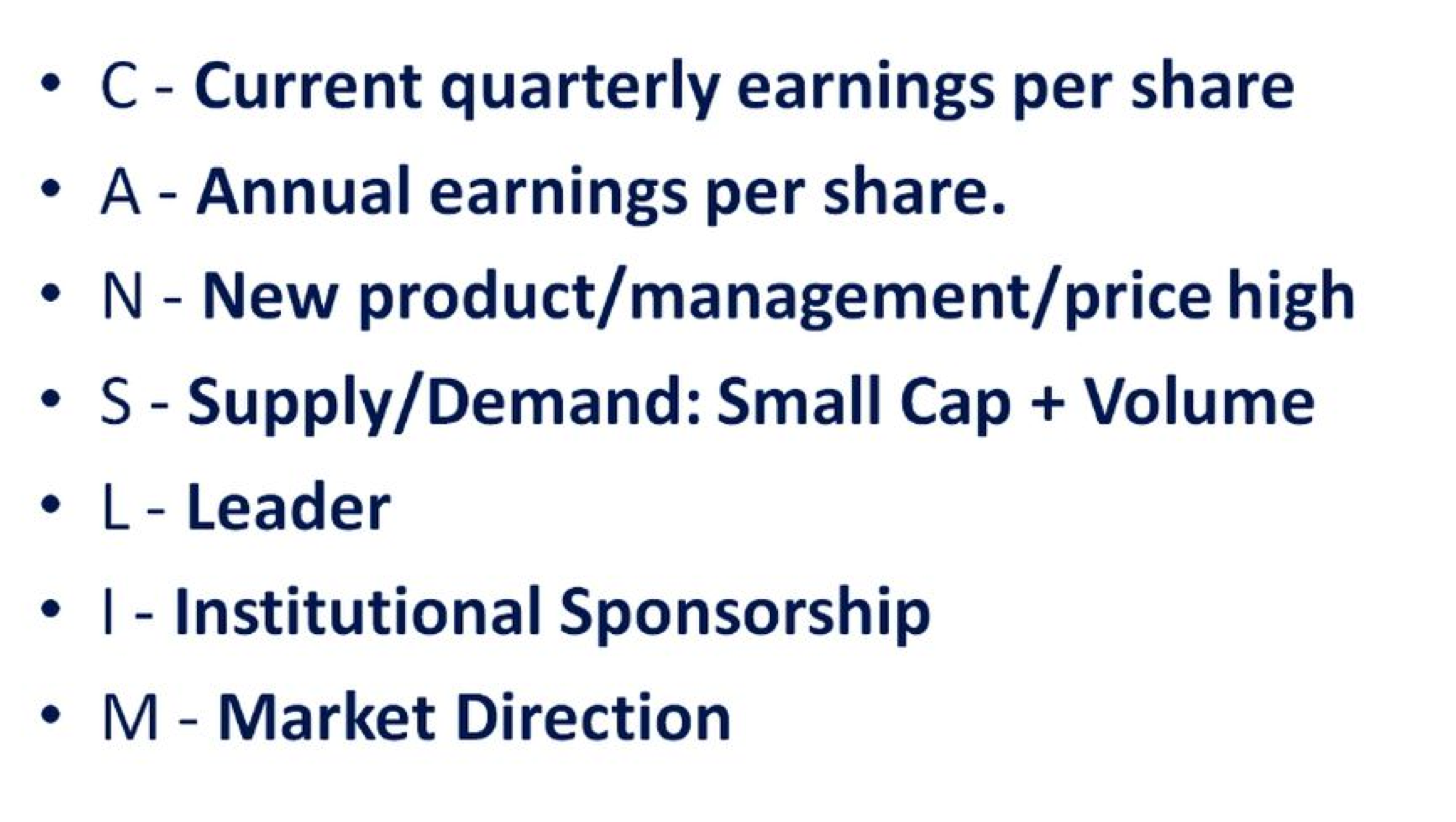by Ben Carlson, A Wealth of Common Sense
“Even investors who were guided by a quantitative stock selection system can let their human inconsistencies hogtie them.” – Jim O’Shaughnessy
CAN SLIM is a well-known growth stock picking system developed by William O’Neill that gets published in the Investor’s Business Daily. It takes into account a number of technical and fundamental factors (including rapid earnings growth, trading volume, industry leadership, etc.) to come up with a list of stock picks.
It’s a rule-based system where each letter stands for a different guideline. The system also makes use of stop-losses to go to cash to avoid big losers. The back-tested results of the strategy are impressive. Here are those performance numbers set against the S&P 500 produced by the American Association of Individual Investors:
These returns look pretty amazing. Wouldn’t it be great if there was an easy way to invest in this strategy?
Well, actually there is.
The CAN SLIM Select Growth Fund (CANGX). Here’s how it’s described by the mutual fund company that runs it:
The Fund seeks long-term capital appreciation and will invest primarily in common stocks of all sizes exhibiting accelerated earnings growth, market leadership, and other characteristics consistent with the CAN SLIM® System.
Published by Investor’s Business Daily®, the CAN SLIM® Select List represents those companies that, according to the CAN SLIM® Select List, possess the seven most common characteristics that all great performing stocks have before they make their biggest gains.
Let’s see if the fund has lived up to its claim.
Morningstar categorizes CANGX as a mid cap growth fund so it doesn’t make sense to compare it to the S&P 500. Here are the performance numbers from the inception of the fund in 2006 through the end of June of this year set against the Vanguard Mid Cap Growth Fund:
Obviously the back-tested returns from this strategy haven’t translated well into the real world. It would be easy to assume that the back-tested results are unrealistic, but there could be a number of issues that have caused the performance to lag both its category and the system’s results.
The easiest issue to diagnose is the fact that real world investing incurs costs that don’t get picked up by a back-test. According to Morningstar, the fund carries an expense ratio of 1.58% and has annual portfolio turnover of 269%. Those costs create a high hurdle rate to beat right off the bat from trading activity and fees. The excessive trading can also lead to an increased tax bill if not held in a tax-sheltered account.
It’s impossible to know for sure but with a highly active strategy like this there is always room for human error. Although rules-based or quantitative models are a great way to take the emotions out of investing decisions, there will always be the temptation to make tweaks to try to improve results or add rules when the strategy runs into trouble.
Back-tested results assume the rules are followed exactly as they were laid out with no tinkering along the way. It can be very difficult in actual market conditions to implement a model and stay out of your own way to let it work.
Investors in the fund aren’t without fault here either. Poor timing decisions in the fund made the average results even worse than advertised:
The 5 years investor returns are actually ranked in the worst 5% of all funds in its fund category. Flows into and out of a fund like this can be what makes it so difficult to be a mutual fund manager.
If investors want to sell after losses have already occurred the fund manager has no choice but to sell stocks to meet those redemptions. And if investors flood a fund with contributions after gains then the fund manager has no choice but to buy stocks.
Add it all up — high costs, human error, poor investor behavior — and you get performance that is nowhere close to the market-beating back-tested results that look so great on paper.
This doesn’t mean CAN SLIM doesn’t or can’t work. Just like all other models or investment strategies the end user and portfolio structure have much more to do with the final results than the system itself.
Source:
Stock screen performance (AAII)
Subscribe to receive email updates and my monthly newsletter by clicking here.
Follow me on Twitter: @awealthofcs
Copyright © A Wealth of Common Sense


















